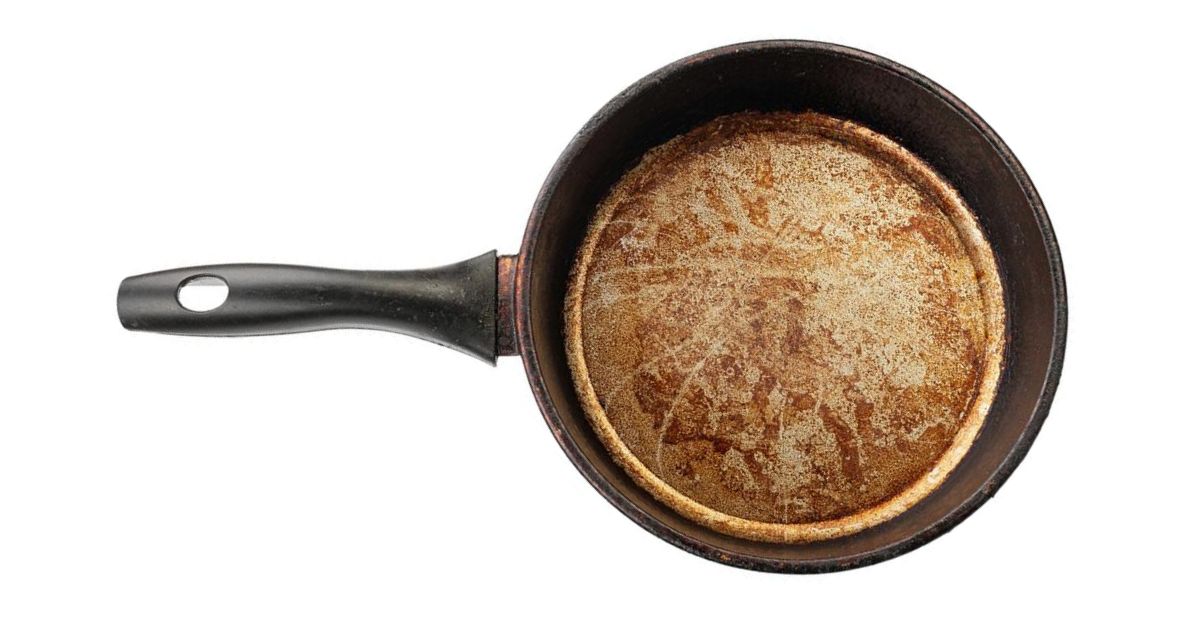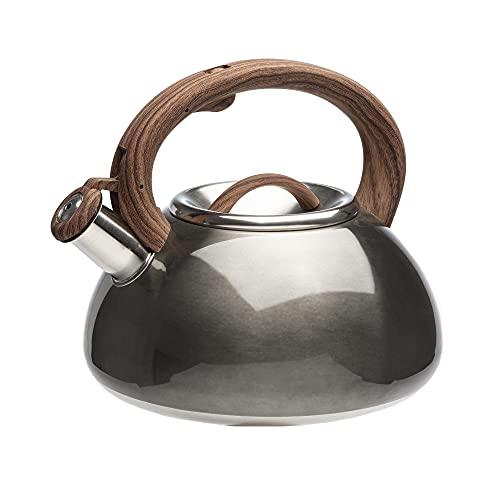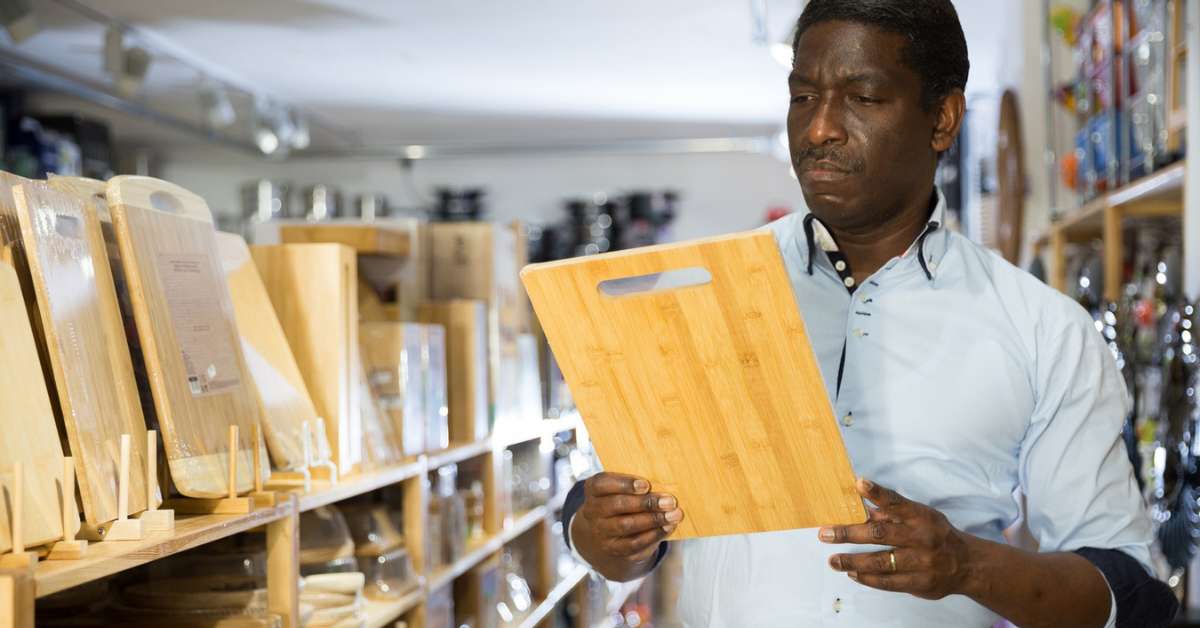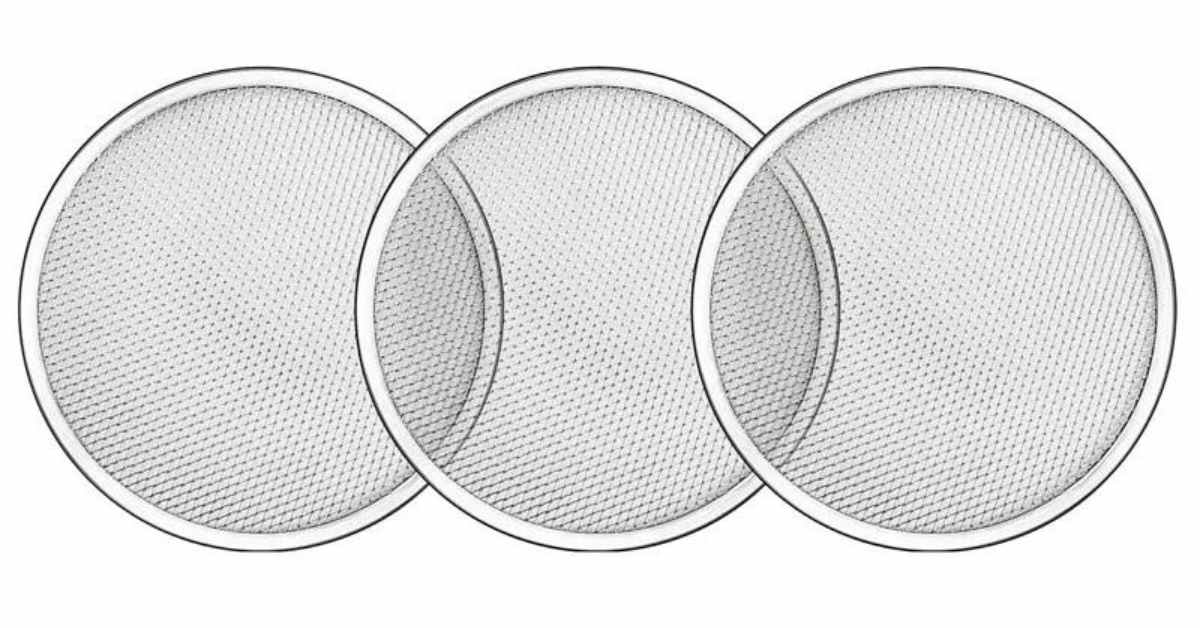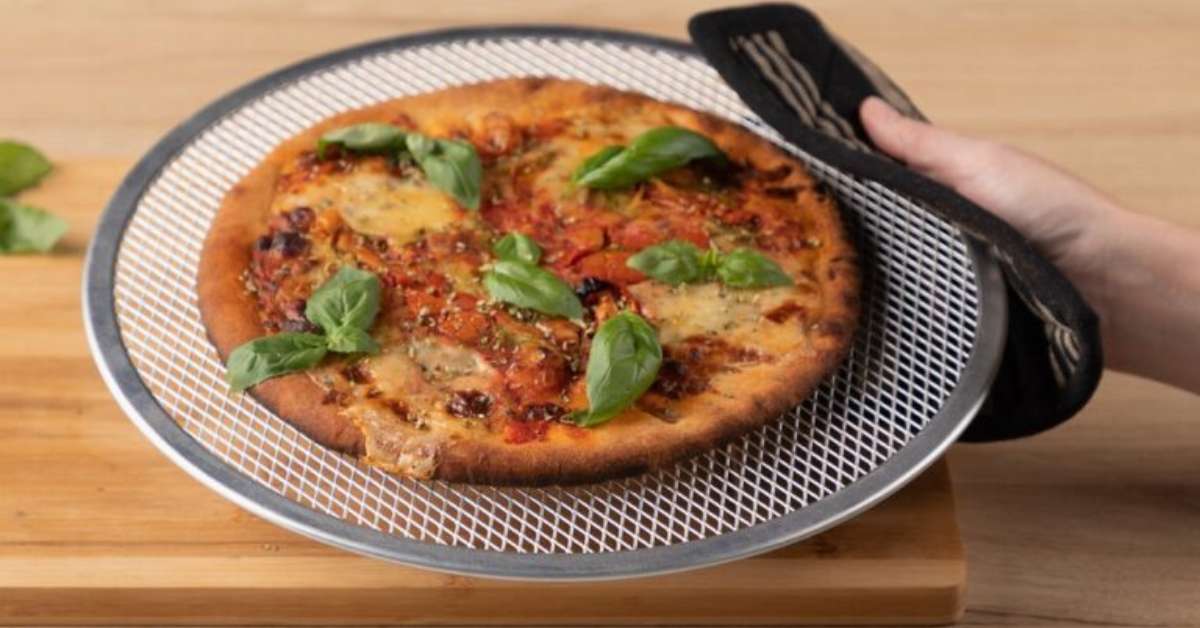Welcome to our expert guide on how to remove rust from a carbon steel pan! If you’re a cooking enthusiast who loves using carbon steel pans, you probably know how amazing they are in the kitchen. However, over time, these pans can develop rust, which may seem like a daunting problem.
But fear not! You can return your carbon steel pan to its former glory with our tried and tested methods. We’ll walk you through this step-by-step, ensuring your pan becomes rust-free without damage. So, let’s dive in and rescue your beloved carbon steel pan from the clutches of rust!
Table of Contents
ToggleHow to identify rust on a carbon steel pan
Spotting rust on your beloved carbon steel pan can be disheartening, but it’s essential to catch it early to prevent further damage. Identifying rust is the first step towards restoring your pan to its optimal condition. Here are some simple methods to help you determine if rust has taken hold of your carbon steel pan:
Visual Inspection: Take a close look at your pan’s surface. If you notice any reddish-brown spots or discolorations, chances are it’s rust. Rust usually forms on the pan’s surface and can be easily distinguishable from other stains or blemishes.
Texture Check: Run your fingers gently over the surface of the pan. If you feel any rough or raised patches, it could be rust. Rust tends to create uneven textures on the pan’s character, which you can detect through touch.
Water Test: Conduct a simple water test to confirm rust presence. Wash your pan thoroughly and dry it completely. Then, sprinkle a few drops of water on the surface. The pan is likely rust-free if the water forms beads and rolls off smoothly. However, if the water forms a thin film or spreads unevenly, it indicates the presence of rust.
Chemical Reaction: Vinegar is an excellent natural rust indicator. Dampen a cloth with white vinegar and rub it gently on a small area of the pan. If you observe fizzing or bubbling, it confirms the presence of rust.
Catching rust early can prevent it from spreading and damaging your carbon steel pan. Once you’ve confirmed the presence of rust, don’t worry; we’ll guide you through the steps to remove it effectively in the upcoming sections.
Preparing for Rust Removal
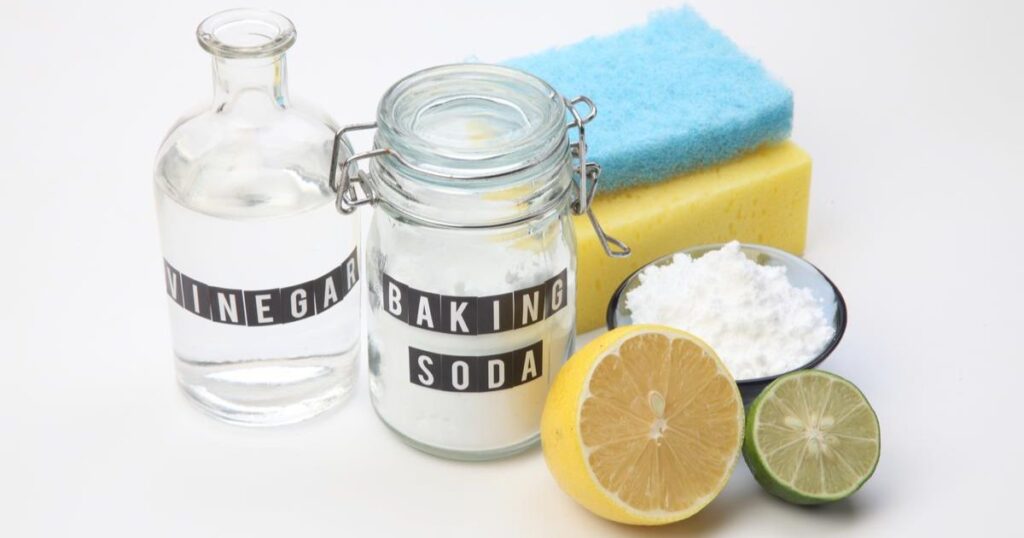
Before we dive into removing the rust from your carbon steel pan, it’s essential to be well-prepared. Gathering the necessary tools and materials will make the process smooth and efficient. Here’s what you’ll need:
Protective Gear: Wear protective gear such as rubber gloves and safety goggles to ensure safety during rust removal. This will shield your hands and eyes from cleaning agents or rust particles.
Vinegar or Lemon Juice: Both vinegar and lemon juice are acidic and effective in breaking down rust. Choose either of these natural solutions as your primary rust remover.
Baking Soda or Salt: These everyday household items act as mild abrasives, removing rust without damaging the carbon steel surface.
Soft Cloth or Sponge: Opt for a soft cloth or non-abrasive sponge to avoid scratching the pan while cleaning.
Paper Towels: Keep some paper towels handy for drying the pan after cleaning.
Cooking Oil: A cooking oil like vegetable or coconut oil will help season your pan after rust removal.
Cleaning the Carbon Steel Pan Before Rust Removal
Properly cleaning your carbon steel pan before rust removal is crucial. Follow these steps to ensure the best results:
Wash with Warm, Soapy Water: Rinse the pan with warm soapy water to remove any surface dirt or grease. Gently scrub with a sponge if needed.
Dry Thoroughly: Dry the pan completely with a paper towel or cloth after washing.
Inspect for Residues: Check the pan’s surface for lingering residues or stubborn stains. If present, repeat the cleaning process until the pan is clean.
By preparing your tools and cleaning the pan beforehand, you’ll be all set to tackle the rust removal process effectively.
Methods for Removing Rust from Carbon Steel Pan
Rust on a carbon steel pan doesn’t have to be a permanent setback. With the proper methods, you can successfully restore its shine and functionality. Let’s explore various practical techniques for rust removal:
Method 1: Vinegar and Baking Soda
Vinegar and baking soda create a powerful combination to combat rust. Start by soaking your rusted pan in white vinegar overnight or overnight. The acidic properties of vinegar will help dissolve the rust. After washing, sprinkle baking soda on the affected areas and gently scrub with a soft cloth or sponge. Rinse thoroughly and dry the pan.
Method 2: Salt and Potato
This simple yet effective method involves using a potato and salt. Cut a potato in half and dip the cut side in salt. Rub the rusted areas with the salted potato. The oxalic acid present in the potato helps dissolve the rust. Once you’ve scrubbed the entire surface, rinse the pan and dry it thoroughly.
Method 3: Lemon and Salt
Lemon, like vinegar, is acidic and excellent at rust removal. Squeeze fresh lemon juice onto the rusted areas and sprinkle salt over it. Let it sit for a few hours, then scrub the rust away with a soft cloth or sponge. Rinse the pan and ensure it’s scorched.
Method 4: Steel Wool and Dish Soap
Steel wool can be effective for stubborn rust but use it cautiously to avoid scratching the pan. Apply a small dish soap to the rusted areas and scrub gently with the steel wool. Rinse the pan thoroughly, and dry it immediately to prevent new rust from forming.
Method 5: Electrolysis
Electrolysis is a more advanced method requiring some DIY setup. Submerge your rusted pan in an electrolyte solution, such as a mix of water and washing soda. Then, use a power source to create a flow of electricity through the pan, which will help remove the rust. This method can be highly effective for severely rusted pans.
Method 6: Commercial Rust Removers
Commercial rust removers are available in the market if you prefer a ready-to-use solution. Follow the manufacturer’s instructions for application and safety precautions.
Remember, after removing the rust, it’s crucial to reseason your carbon steel pan to protect it from future rusting. Choose the method that suits your comfort level and the extent of rust on your pan. Once you’ve successfully followed the rust removal process, your carbon steel pan looks pristine and will serve you delicious meals again!
Choosing the Right Rust Removal Method
You have several effective methods when removing rust from your cherished carbon steel pan. Each technique has its strengths and is suitable for different degrees of rusting. Here’s a guide to help you choose the proper rust removal method for your specific situation:
Vinegar and Baking Soda: This method is ideal for mild to moderate rusting. It’s a simple and natural approach that requires minimal effort. If your carbon steel pan has light surface rust or minor spots, vinegar, and baking soda work wonders.
Salt and Potato: When dealing with light rust or smaller areas of rust on your pan, the salt and potato method can be surprisingly effective. It’s a gentler option that won’t harm the pan’s surface.
Lemon and Salt: Like vinegar, lemon’s acidic properties make it a reliable rust remover. This method suits light to moderate rust and adds a pleasant citrus fragrance to your pan.
Steel Wool and Dish Soap: This method can be proper for more stubborn rust, but exercise caution to prevent scratching the pan. It’s suitable for moderate rusting or tough-to-remove spots.
Electrolysis: Electrolysis is a powerful method to consider if your carbon steel pan has severe rusting or extensive rust build-up. While it requires more setup, it can deliver excellent results for heavily rusted pans.
Commercial Rust Removers: Commercial rust removers are worth exploring if you prefer a convenient and ready-to-use solution. They come with specific instructions, making them suitable for various degrees of rusting.
Before deciding on a rust removal method, consider the extent of rust on your carbon steel pan, the available materials and tools, and your comfort level with each technique. Regardless of your chosen method, always prioritize safety and follow the instructions carefully to ensure the best outcomes.
Step-by-Step Guide for Rust Removal
Removing rust from your treasured carbon steel pan can be rewarding, restoring its beauty and functionality. Let’s walk through a comprehensive step-by-step guide to help you effectively remove rust and revive your pan:
Step 1: Gather Your Tools and Materials
Before you begin, ensure you have all the tools and materials for rust removal. Gather protective gear, such as rubber gloves and safety goggles, and your chosen rust removal agents, like vinegar, baking soda, lemon, salt, steel wool, dish soap, and a soft cloth or sponge.
Step 2: Clean the Pan
Start by washing your carbon steel pan with warm soapy water to remove any surface dirt or grease. Thoroughly dry the pan with a paper towel or cloth, ensuring it’s moisture-free before proceeding.
Step 3: Identify Rust Areas
Carefully inspect the pan’s surface to identify rusted areas. Note the extent of rusting to determine the appropriate removal method.
Step 4: Choose the Right Method
Based on the degree of rust on your pan, please select the most suitable rust removal method from our discussed options. Consider factors like the severity of rust, your comfort level with the technique, and the materials you have available.
Step 5: Apply the Chosen Method
Follow the instructions for your selected rust removal method:
- For vinegar, baking soda, lemon, and salt methods: Apply the chosen solution to the rusted areas and let it sit for a few hours or overnight. Scrub gently with a soft cloth or sponge, then rinse thoroughly and dry the pan.
- For salt and potato method: Dip the cut side of the potato in salt and rub it on the rusted areas. After scrubbing, rinse the pan and dry it thoroughly.
- For steel wool and dish soap method: Apply a small amount of dish soap to the rusted areas and gently scrub with steel wool. Rinse thoroughly and dry the pan immediately.
- For electrolysis, Follow a DIY setup to create an electrolyte solution and apply an electric current to the pan to remove severe rust.
- For commercial rust removers: Follow the manufacturer’s instructions carefully for application.
Step 6: Rinse and Dry
After using any rust removal method, rinse the pan thoroughly to remove any residue from the cleaning agents. Dry the pan thoroughly to prevent new rust from forming.
Step 7: Season the Pan
Once the rust is removed, seasoning your carbon steel pan to protect it from future rusting is crucial. Follow the seasoning process specific to your pan type.
With these steps, you’ll be well on your way to removing rust from your carbon steel pan and restoring it to its former glory.
Tips for Preventing Rust from Forming on Carbon Steel Pans
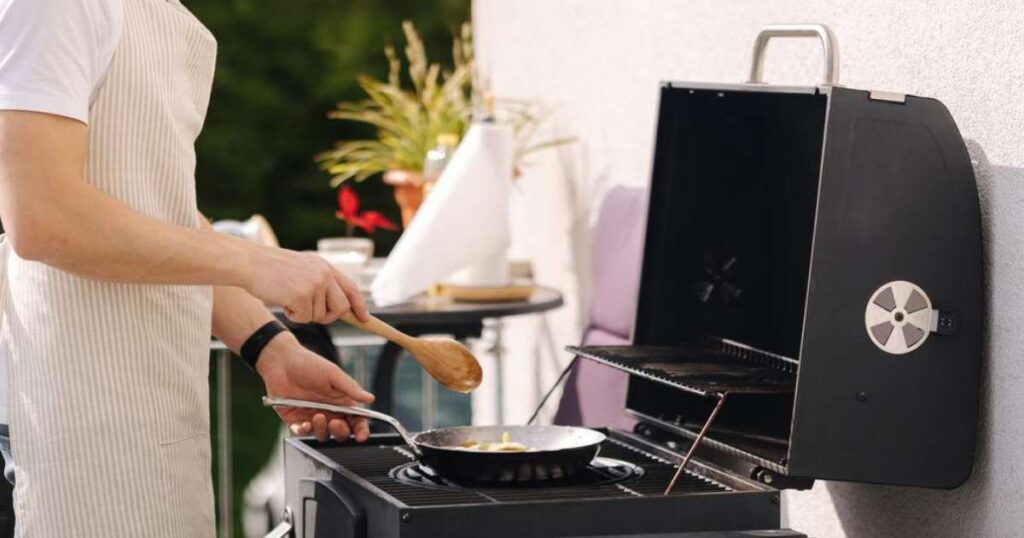
Prevention is vital for keeping your carbon steel pan in top condition and rust-free. By following these simple tips, you can extend the life of your pan and enjoy its cooking benefits for years to come:
Dry Thoroughly After Cleaning: After each use, wash your carbon steel pan with warm soapy water and dry it thoroughly with a towel. Avoid leaving the pan wet or air drying, as moisture catalyzes rust formation.
Season Regularly: Seasoning creates a protective layer on the pan’s surface, preventing moisture from reaching the metal and causing rust. Regularly apply a thin layer of oil and heat the pan until it smokes. This process helps maintain the non-stick properties and guards against rust.
Store in a Dry Place: Store your carbon steel pan in a dry, well-ventilated area. Avoid stacking pans on each other, as contact between pans can lead to scratches that expose the metal to moisture.
Avoid Soaking: Refrain from soaking your carbon steel pan in water or submerging it for extended periods. Prolonged exposure to water can encourage rust development.
Clean with Gentle Methods: When cleaning your pan, use gentle methods to avoid damaging the seasoning or the pan’s surface. Avoid harsh scouring pads or abrasive cleaners that can strip away the protective layer.
Use Cooking Oils with High Smoke Points: Opt for oils with high smoke points, like vegetable oil, grapeseed oil, or flaxseed oil, for seasoning and cooking. These oils are less likely to break down and turn rancid, maintaining the seasoning’s integrity.
Avoid Acidic Foods and Long-Term Storage: Acidic foods like tomatoes or citrus fruits can erode the seasoning and expose the metal to rust. Additionally, avoid leaving food in the pan for an extended period, as it can lead to moisture accumulation.
Reseason as Needed: Over time, the seasoning on your carbon steel pan may wear off. When you notice diminished seasoning or increased sticking, it’s time to reseason the pan.
Cook Regularly: Using your carbon steel pan helps maintain its seasoning and prevents rust. Cooking with oils and fats creates a natural barrier against moisture.
Be Mindful During Storage and Transport: If you need to transport your carbon steel pan or store it for an extended period, ensure it’s clean, dry, and adequately protected to avoid any potential scratching or rusting.
By incorporating these preventive measures into your pan care routine, you can preserve the beauty and performance of your carbon steel pan and keep it rust-free for a lifetime of enjoyable cooking experiences.
Frequently Asked Questions (FAQs)
Can you get the rust off carbon steel?
Yes, you can remove rust from carbon steel. Various effective methods include vinegar, baking soda, lemon, salt, steel wool, or commercial rust removers. Proper cleaning and rust removal techniques can restore your carbon steel pan to its former condition.
Why did my carbon steel rust?
Carbon steel can rust when exposed to moisture and air. If the pan is not thoroughly dried after cleaning or cooking or stored in a humid environment, rust can form on the surface. Additionally, acidic foods can contribute to rust formation by breaking down the seasoning layer.
Can I use vinegar in a carbon steel pan?
You can use vinegar to remove rust from a carbon steel pan. The acidic properties of vinegar help dissolve rust and make it an effective natural rust remover. Remember to rinse and dry the pan thoroughly after using vinegar.
How long does carbon steel rust?
The speed at which carbon steel rusts depends on various factors, including exposure to moisture, humidity, and how well it is seasoned and maintained. If not correctly cared for, carbon steel pans can begin to rust relatively quickly. By following proper maintenance and seasoning techniques, you can significantly prolong the life of your carbon steel pan and delay rust formation.

